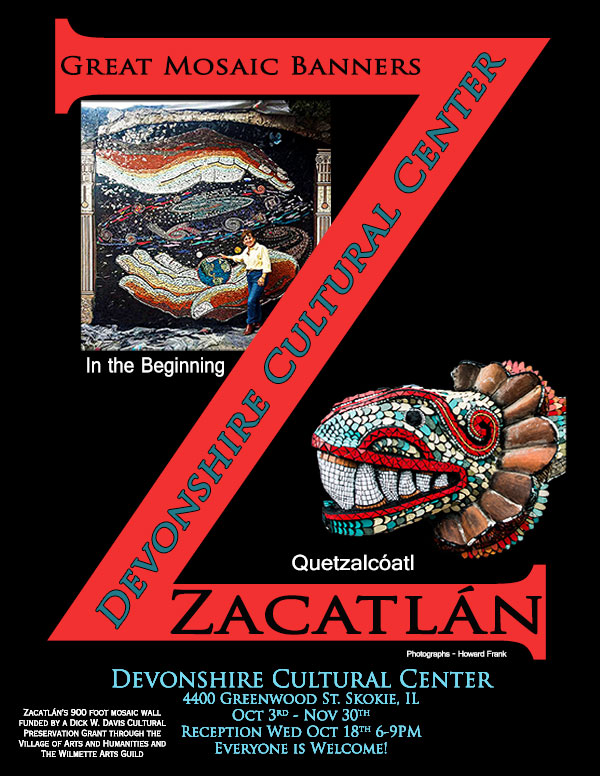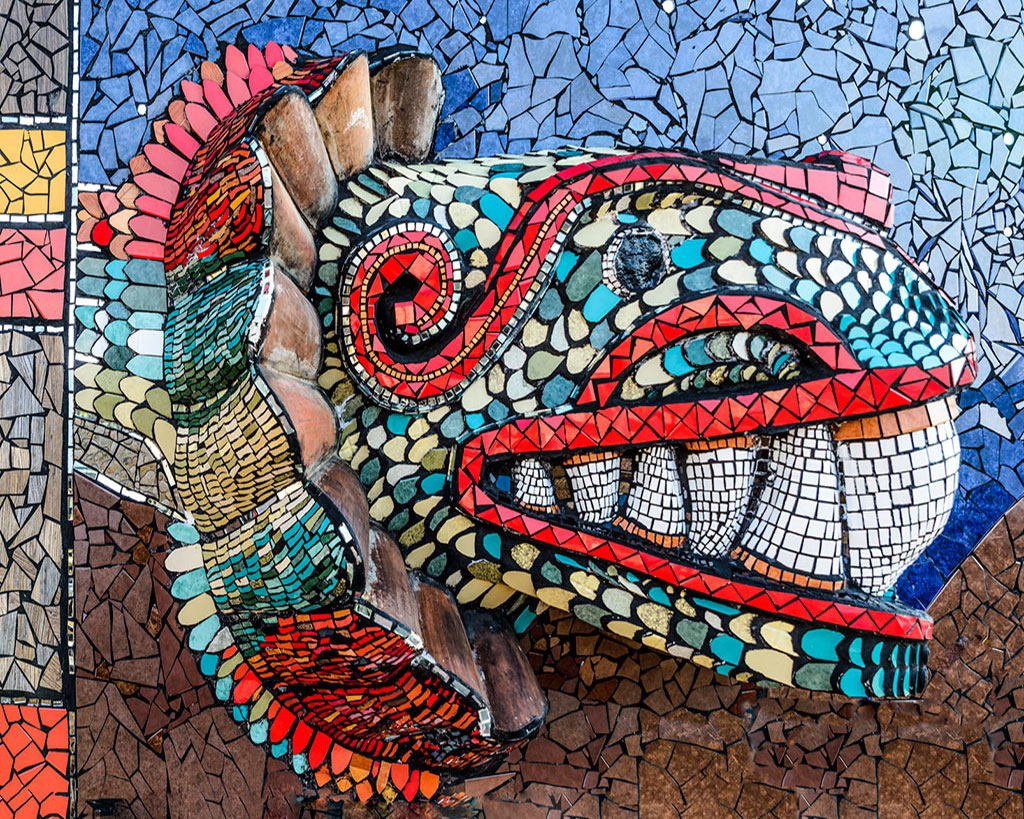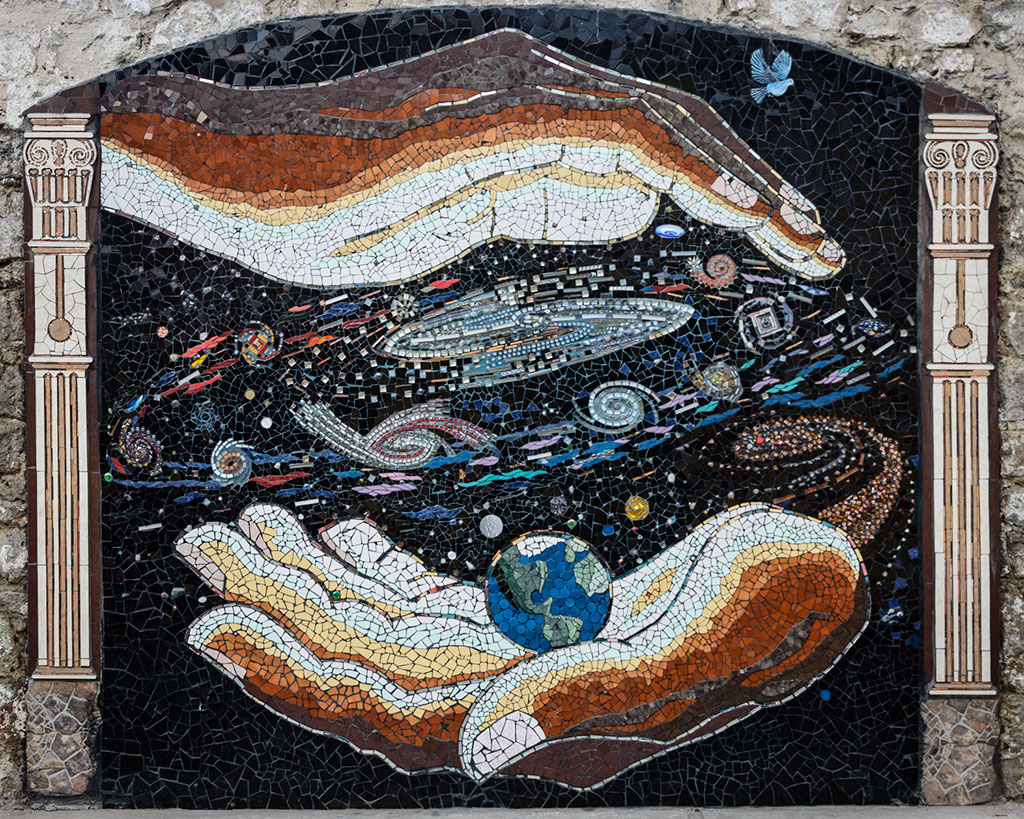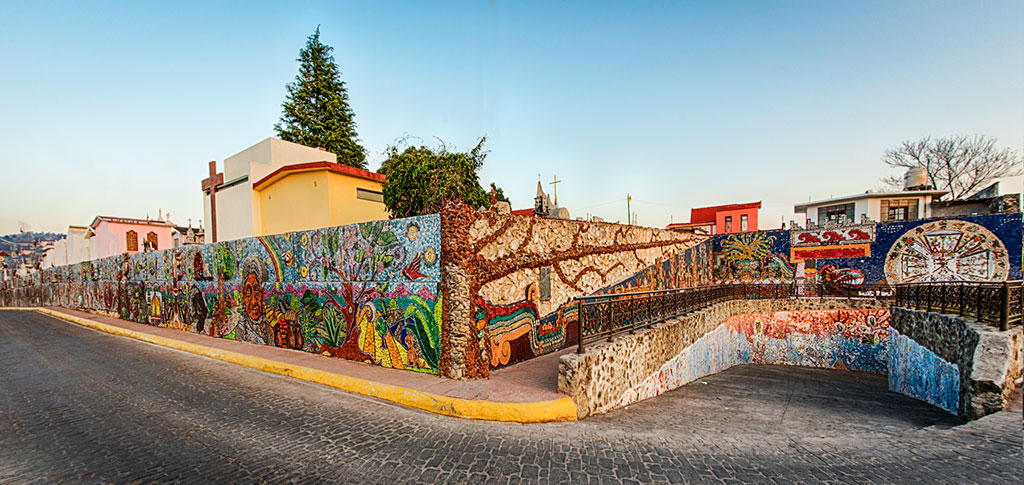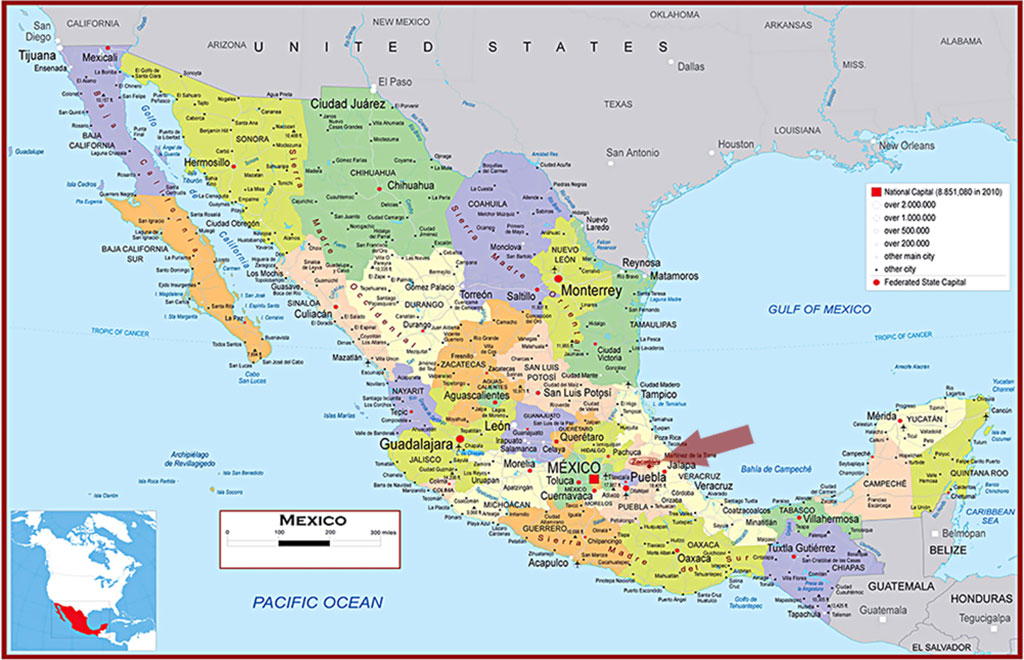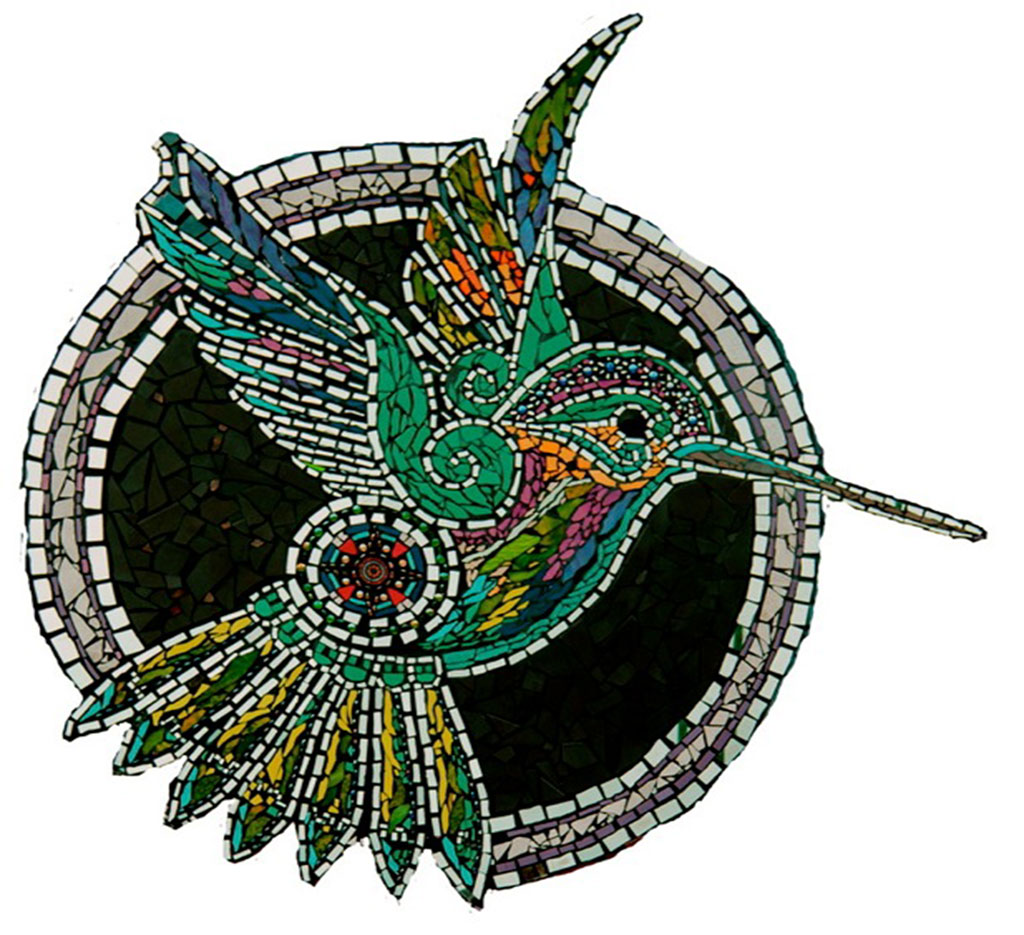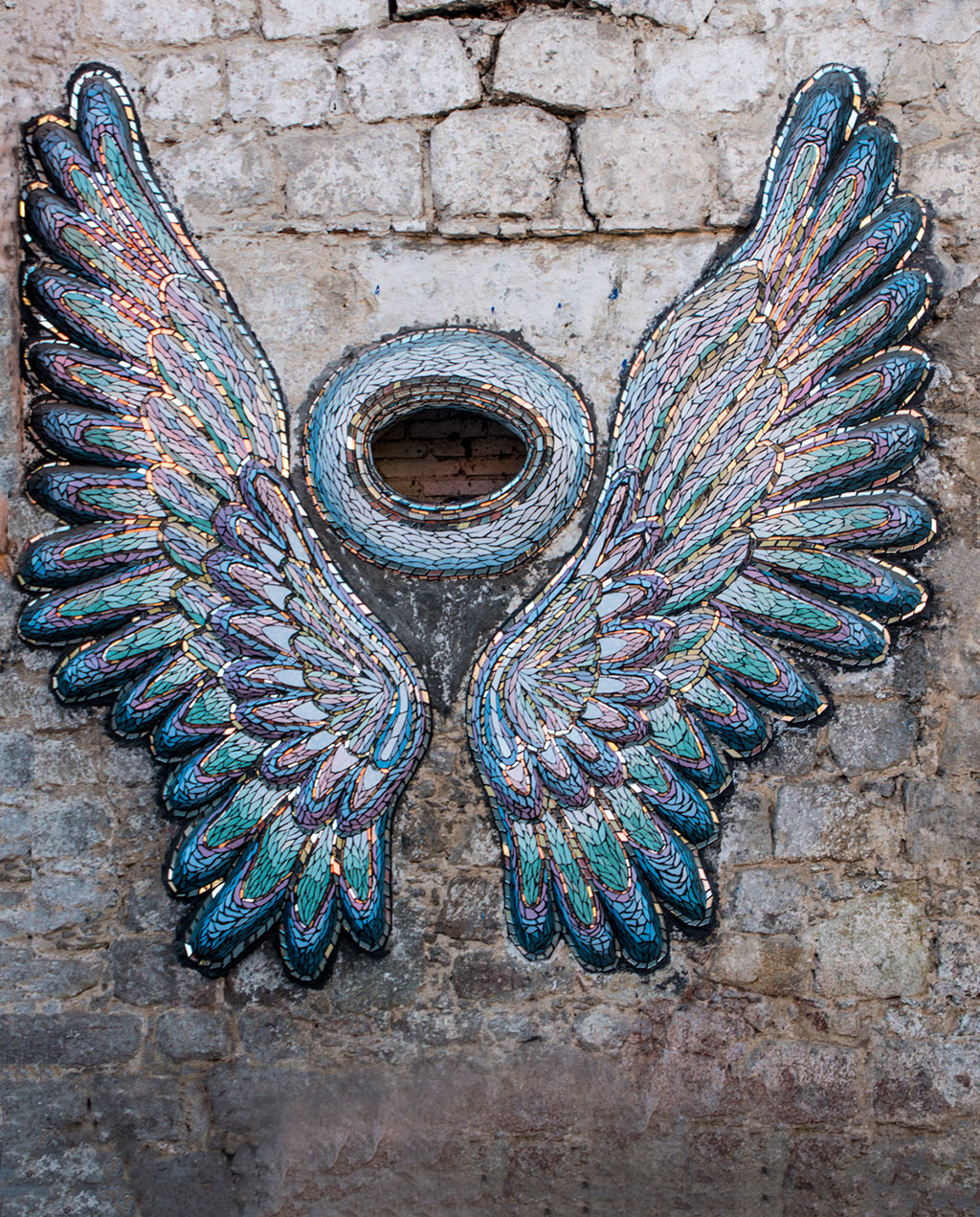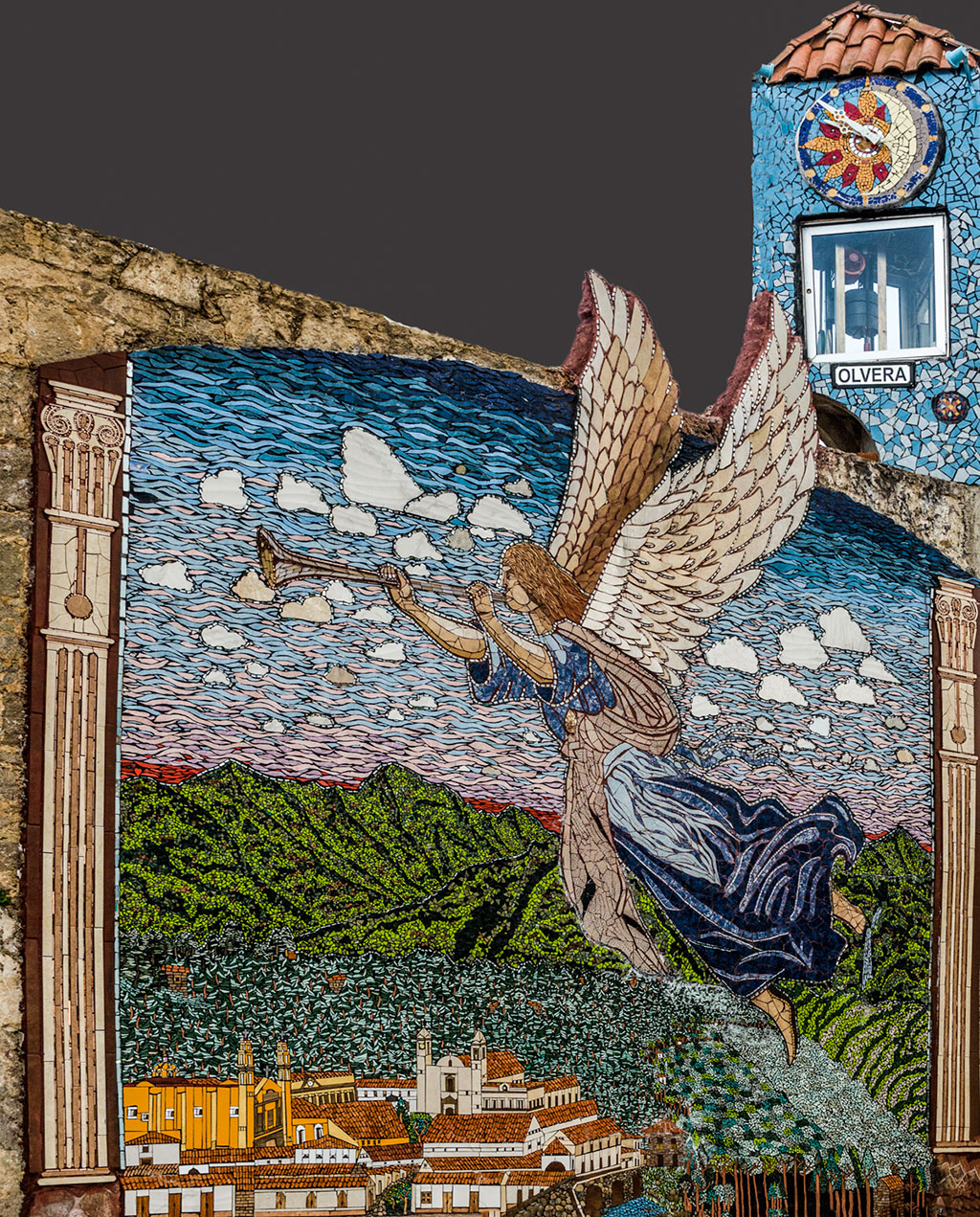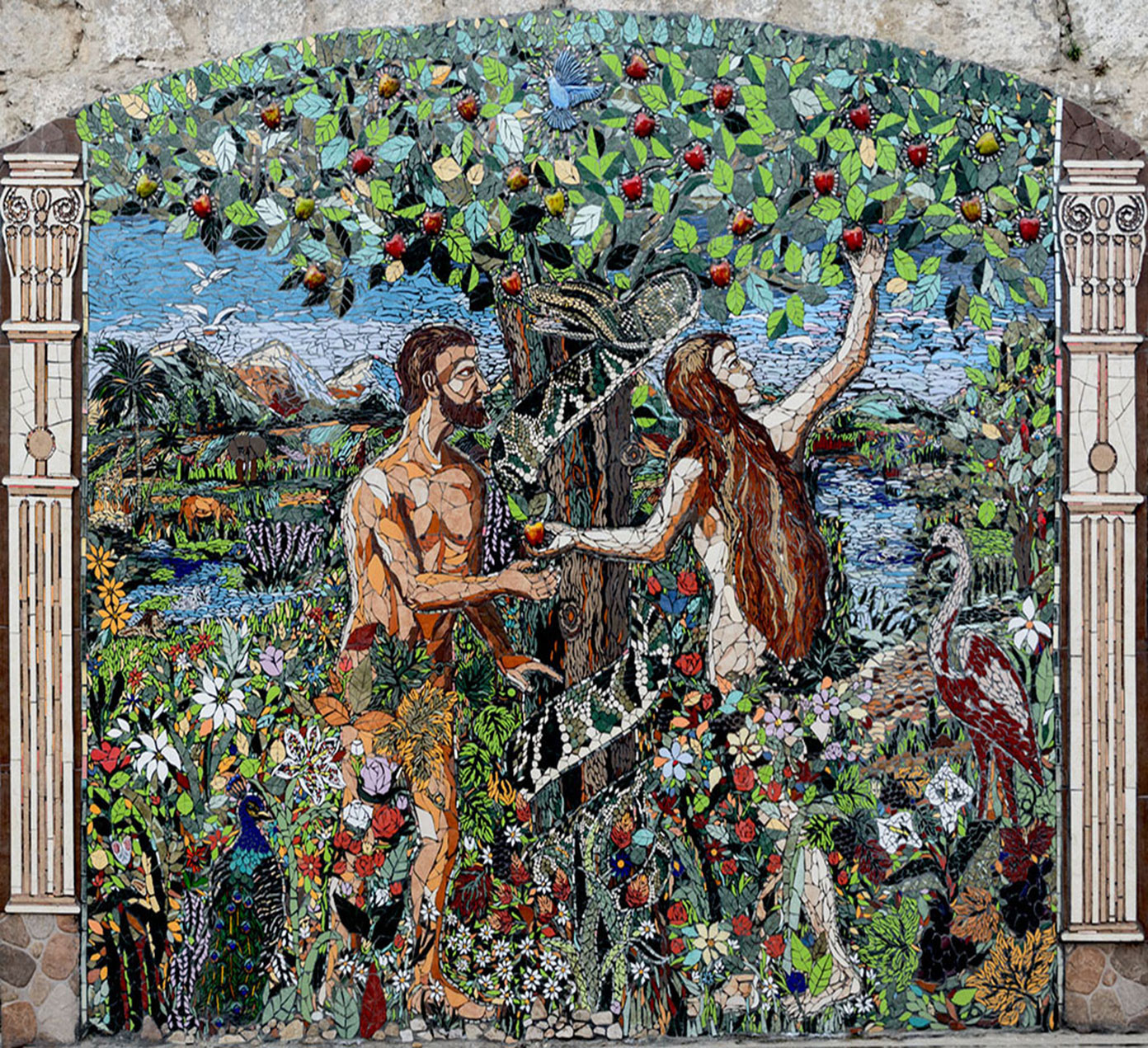Mosaic Wall of Zacatlán
Four years ago Mary Carmen Olvera Trejo of Zacatlán,Mexico and Dick W. Davis of Danville, California began to organize the “crew”of local volunteers and collect the shards of tiles that would complete the Great Mosaic Wall along the drab retaining wall of the cemetery following the road along the great gorge or barranca.
The dozen huge brilliantly colored motifs form a single unit now the length of three football fields, illustrating the development of Zacatlán from the indigenous Nahuatl culture with its brilliant dragons and hummingbirds to the present commercial apple motifs.The town is Zacatlán de las Manzanas, the largest apple producer in Mexico. Though Mexico is secular, Catholicism has influenced culture and spirit since the sixteenth century, so the gorgeous panels of biblical subjects seems necessary and appropriate.
Context does change behavior. Suddenly movie companies are coming to film! Wedding pictures are being taken in front of the wall! Houses are being painted! Increased tourism brings new restaurants and hotels. In 2011 Zacatlán was designated a “Pueblo Mágico” now it is a “Pueblo Increible!”
Zacatlán de las Manzanas
Zacatlán is located in the Sierra Norte de Puebla region in central Mexico. The area is known for its production of apples, cider and fruit wines, which are promoted through the annual Apple Festival and Cider Festival. It is also home to the Relojes Centenario company, the first clock factory in Latin America and the builder of the city’s double sided flower clock in the main square. The historic center of the city is filled with traditional houses with red tile roofs and Zacatlan was designated a “Pueblo Mágico” in 2011. Outside of the city proper, there is a significant indigenous population, the Piedras Encimadas Valley with its rock formations and various waterfalls and ravines.
